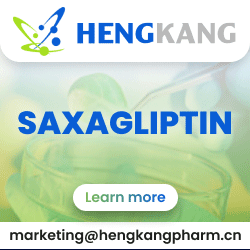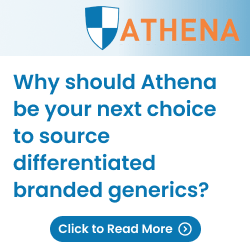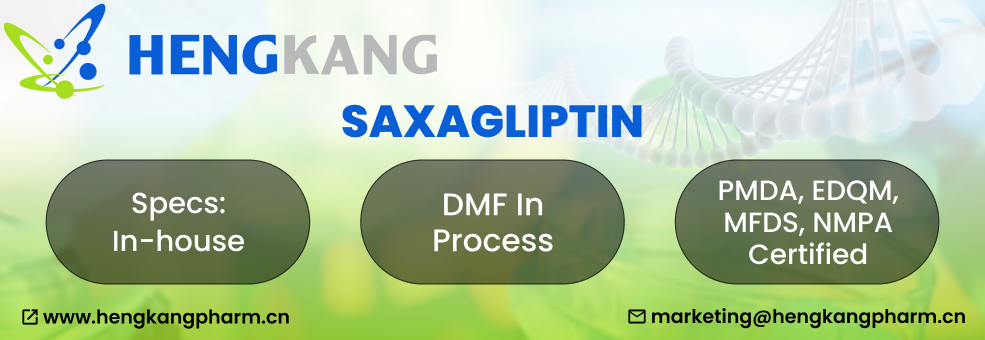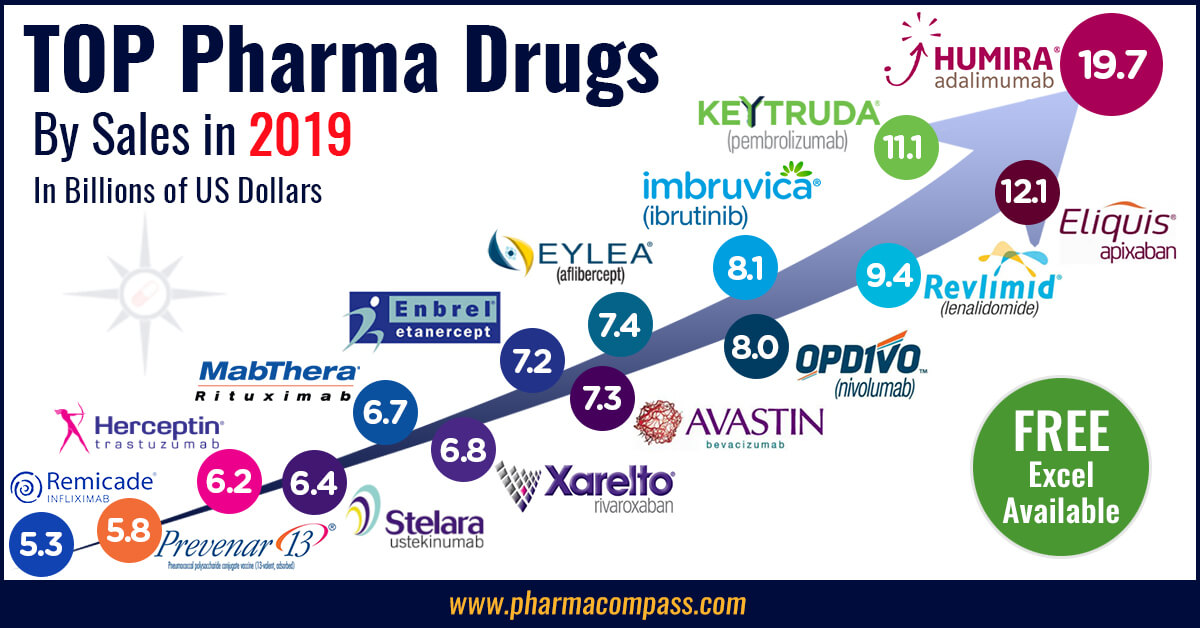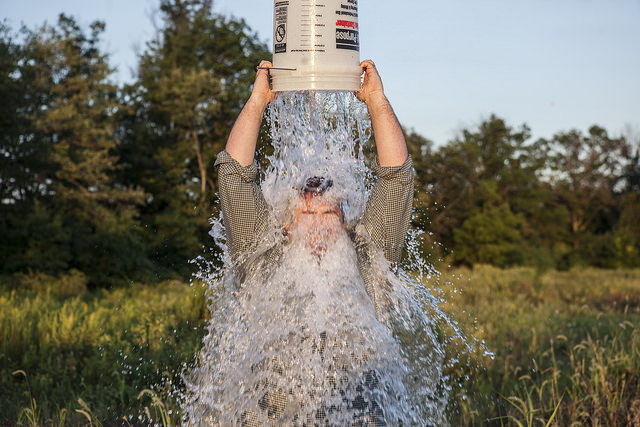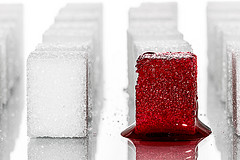Acquisitions and spin-offs dominated headlines in 2019 and the tone was set very early with Bristol-Myers Squibb acquiring
New Jersey-based cancer drug company Celgene in a US$ 74 billion deal announced on
January 3, 2019. After factoring
in debt, the deal value ballooned to about US$ 95 billion, which according
to data compiled by Refinitiv, made it the largest healthcare deal on
record.
In the summer, AbbVie Inc,
which sells the world’s best-selling drug Humira, announced its acquisition of Allergan Plc, known for Botox and other cosmetic
treatments, for US$ 63 billion. While the companies are still awaiting
regulatory approval for their deal, with US$ 49 billion in combined 2019
revenues, the merged entity would rank amongst the biggest in the industry.
View Our Interactive Dashboard on Top drugs by sales in 2019 (Free Excel Available)
The big five by pharmaceutical sales — Pfizer,
Roche, J&J, Novartis and Merck
Pfizer
continued
to lead companies by pharmaceutical sales by reporting annual 2019 revenues of
US$ 51.8 billion, a decrease of US$ 1.9 billion, or 4 percent, compared to
2018. The decline was primarily attributed to the loss of exclusivity of Lyrica in 2019,
which witnessed its sales drop from US$ 5 billion in 2018 to US$ 3.3 billion in
2019.
In 2018, Pfizer’s then incoming CEO Albert Bourla had mentioned that the company did not see the need for any large-scale M&A activity as Pfizer had “the best pipeline” in its history, which needed the company to focus on deploying its capital to keep its pipeline flowing and execute on its drug launches.
Bourla stayed true to his word and barring the acquisition of Array Biopharma for US$ 11.4 billion and a spin-off to merge Upjohn, Pfizer’s off-patent branded and generic established medicines business with
Mylan, there weren’t any other big ticket deals which were announced.
The
Upjohn-Mylan merged entity will be called Viatris and is expected to have 2020
revenues between US$ 19 and US$ 20 billion
and could outpace Teva to
become the largest generic company in the world, in term of revenues.
Novartis, which had
followed Pfizer with the second largest revenues in the pharmaceutical industry
in 2018, reported its first full year earnings after spinning off its Alcon eye
care devices business division that
had US$ 7.15 billion in 2018 sales.
In 2019,
Novartis slipped two spots in the ranking after reporting total sales of US$
47.4 billion and its CEO Vas Narasimhan continued his deal-making spree by buying New
Jersey-headquartered The Medicines Company (MedCo) for US$ 9.7
billion to acquire a late-stage cholesterol-lowering
therapy named inclisiran.
As Takeda Pharmaceutical Co was
busy in 2019 on working to reduce its debt burden incurred due to its US$ 62
billion purchase of Shire Plc, which was announced in 2018, Novartis also purchased
the eye-disease medicine, Xiidra, from the Japanese drugmaker for US$ 5.3 billion.
Novartis’ management also spent a considerable part of 2019 dealing with data-integrity concerns which emerged from its 2018 buyout of AveXis, the
gene-therapy maker Novartis had acquired for US$ 8.7 billion.
The deal gave Novartis rights to Zolgensma,
a novel treatment intended for children less than two years of age with the
most severe form of spinal muscular atrophy (SMA). Priced at US$ 2.1 million,
Zolgensma is currently the world’s most expensive drug.
However,
in a shocking announcement, a month after approving the drug, the US Food and
Drug Administration (FDA) issued a press release on
data accuracy issues as the agency was informed by AveXis that
its personnel had manipulated data which
the FDA used to evaluate product comparability and nonclinical (animal)
pharmacology as part of the biologics license application (BLA), which was
submitted and reviewed by the FDA.
With US$
50.0 billion (CHF 48.5 billion) in annual pharmaceutical sales, Swiss drugmaker
Roche came in at number two position in 2019
as its sales grew 11 percent driven by
its multiple sclerosis medicine Ocrevus, haemophilia drug Hemlibra and cancer medicines Tecentriq and Perjeta.
Roche’s newly introduced medicines generated US$ 5.53 billion (CHF 5.4 billion) in growth, helping offset the impact of the competition from biosimilars for its three best-selling drugs MabThera/Rituxan, Herceptin and Avastin.
In late 2019, after months of increased
antitrust scrutiny, Roche completed
its US$ 5.1 billion acquisition of Spark Therapeutics to strengthen its presence in
gene therapy.
Last year, J&J reported almost flat worldwide sales of US$ 82.1 billion. J&J’s pharmaceutical division generated US$ 42.20 billion and its medical devices and consumer health divisions brought in US$ 25.96 billion and US$ 13.89 billion respectively.
Since J&J’s consumer health division sells analgesics, digestive health along with beauty and oral care products, the US$ 5.43 billion in consumer health sales from over-the-counter drugs and women’s health products was only used in our assessment of J&J’s total pharmaceutical revenues. With combined pharmaceutical sales of US$ 47.63 billion, J&J made it to number three on our list.
While the sales of products like Stelara, Darzalex, Imbruvica, Invega Sustenna drove J&J’s pharmaceutical business to grow by 4 percent over 2018, the firm had to contend with generic competition against key revenue contributors Remicade and Zytiga.
US-headquartered Merck, which is known as
MSD (short for Merck Sharp & Dohme) outside the United States and
Canada, is set to significantly move up the rankings next year fueled by its
cancer drug Keytruda, which witnessed a 55
percent increase in sales to US$ 11.1 billion.
Merck reported total revenues of US$ 41.75 billion and also
announced it will spin off its women’s health drugs,
biosimilar drugs and older products to create a new pharmaceutical
company with US$ 6.5 billion in annual revenues.
The firm had anticipated 2020 sales between US$ 48.8 billion and US$ 50.3 billion however this week it announced that the coronavirus pandemic will reduce 2020 sales by more than $2 billion.
View Our Interactive Dashboard on Top drugs by sales in 2019 (Free Excel Available)
Humira holds on to remain world’s best-selling drug
AbbVie’s acquisition of Allergan comes as the firm faces the expiration of patent protection for Humira, which brought in a staggering US$ 19.2 billion in sales last year for
the company. AbbVie has failed to successfully acquire or develop a major new
product to replace the sales generated by its flagship drug.
In 2019, Humira’s US revenues increased 8.6 percent to US$ 14.86 billion while internationally, due
to biosimilar competition, the sales dropped 31.1 percent to US$ 4.30 billion.
Bristol Myers Squibb’s Eliquis, which is also marketed by Pfizer, maintained its number two position
and posted total sales of US$ 12.1 billion, a 23 percent increase over 2018.
While Bristol Myers Squibb’s immunotherapy treatment Opdivo, sold in partnership with Ono in Japan, saw sales increase from US$ 7.57 billion to US$ 8.0 billion, the growth paled in comparison to the US$ 3.9
billion revenue increase of Opdivo’s key immunotherapy competitor Merck’s Keytruda.
Keytruda took the number three spot in drug sales that
previously belonged to Celgene’s Revlimid, which witnessed a sales decline from US$ 9.69 billion to US$ 9.4 billion.
Cancer treatment Imbruvica, which is marketed
by J&J and AbbVie, witnessed a 30 percent increase in sales. With US$ 8.1
billion in 2019 revenues, it took the number five position.
View Our Interactive Dashboard on Top drugs by sales in 2019 (Free Excel Available)
Vaccines – Covid-19 turns competitors into partners
This year has been dominated by the single biggest health emergency in years — the novel coronavirus (Covid-19) pandemic. As drugs continue to fail to meet expectations, vaccine development has received a lot of attention.
GSK reported the highest vaccine sales of all drugmakers with
total sales of US$ 8.4 billion (GBP 7.16 billion), a significant portion of its
total sales of US$ 41.8 billion (GBP 33.754 billion).
US-based Merck’s vaccine division also reported a significant increase in sales to US$ 8.0 billion and in 2019 received FDA and EU approval to market its Ebola vaccine Ervebo.
This is the first FDA-authorized vaccine against the deadly virus which causes
hemorrhagic fever and spreads from person to person through direct contact with
body fluids.
Pfizer and Sanofi also reported an increase in their vaccine sales to US$ 6.4
billion and US$ 6.2 billion respectively and the Covid-19 pandemic has recently
pushed drugmakers to move faster than ever before and has also converted
competitors into partners.
In a rare move, drug behemoths — Sanofi and GlaxoSmithKline (GSK) —joined hands to develop a vaccine for the novel coronavirus.
The two companies plan to start human trials
in the second half of this year, and if things go right, they will file
for potential approvals by the second half of 2021.
View Our Interactive Dashboard on Top drugs by sales in 2019 (Free Excel Available)
Our view
Covid-19 has brought the world economy to a grinding halt and shifted the global attention to the pharmaceutical industry’s capability to deliver solutions to address this pandemic.
Our compilation shows that vaccines and drugs
for infectious diseases currently form a tiny fraction of the total sales of
pharmaceutical companies and few drugs against infectious diseases rank high on
the sales list.
This could well explain the limited range of
options currently available to fight Covid-19. With the pandemic currently infecting
over 3 million people spread across more than 200 countries, we can safely
conclude that the scenario in 2020 will change substantially. And so should our
compilation of top drugs for the year.
View Our Interactive Dashboard on Top drugs by sales in 2019 (Free Excel Available)
Impressions: 54754
This week, Phispers tells us why David Hung’s taking charge as CEO of Axovant could signal the revival of an Alzheimer’s compound shelved by GSK. While, the FDA has extended compliance date for submitting DMFs in electronic format, there are also indications that there will be more FDA inspections in India. Plus, there is news on companies like Fresenius, Stada, Ajanta Pharma, Merck and Teva. Read on.
FDA
extends compliance date for electronic DMF submissions to May, 2018
On April
7, the US Food and Drug Administration (FDA) announced it is extending the compliance date for submitting DMFs in Electronic Common Technical Document (eCTD)
format to May 5, 2018.
“DMF submissions that are not submitted in eCTD format after this date will be rejected,” the FDA website said.
“Presentations on submitting in eCTD format created prior to April 7, 2017 will have the incorrect compliance date for DMFs,” it added. Electronic submissions of Drug Master Files (DMFs) were supposed to become mandatory from May 5, 2017.
The
news coincides with the US Senate’s confirmation hearing for Scott Gottlieb, on April 7. Gottlieb was President Trump’s nominee to be the next Commissioner of the FDA.
Gottlieb was with the FDA when the regulator launched its Pharmaceutical cGMPs for the 21st Century initiative. Out of five guidance documents
listed as part of this initiative, only one has been finalized.
With
Gottlieb heading back, Ajaz Hussain, (former FDA deputy office director and
president of the National Institute for Pharmaceutical Technology and
Education of NIPTE), Vadim Gurvich (executive
director of NIPTE) and Peter J. Pitts (president of the Center for Medicine in
the Public Interest and a former FDA associate commissioner) shared their
perspective on how Trump and the FDA can create a pharmaceutical manufacturing renaissance in a blog posted on Morning Consult.
Axovant appoints new CEO and revives ghosts of GSK’s billion dollar mistake
After
selling Medivation to Pfizer for US $ 14 billion and
exiting with US $ 354 million for himself, David Hung is now the CEO of Axovant, the company which we wrote about two years ago, as we asked the question — Did a 29-year old show GSK that it made a billion dollar mistake?
Back in December 2014,Vivek Ramaswamy, CEO and Founder of Roivant Neurosciences and Axovant, had bought an old Alzheimer’s drug that GSK had dropped for US $ 5 million. In October 2014, Roivant had spun off a subsidiary by the name of Axovant, which then bought the GSK drug. GSK had shelved the compound — 5HT6 — after testing it in 13 trials and on 1,250 patients.
Six months after purchasing the compound from GSK, and
without doing any clinical development, the drug resulted in the biggest
biotech IPO ever for Axovant, which got valued at US $ 2 billion. Since then,
Ramaswamy has been setting up more companies.
Throughout, Ramaswamy has recruited high-profile executives to run his companies. And who could be more high profile than Hung? The stock market cheered his appointment — Axovant’s stock was up 28 percent
earlier this week after Hung was announced its CEO.
Axovant is looking for positive data that GSK had gathered for its 5HT6 Alzheimer’s drug. And a number of senior players in the industry say Axovant has a decent shot at taking the successful dose back into the clinic. With Hung joining, it seems the drug discarded by GSK does indeed have merit.
Fresenius
in talks to buy Akorn; Stada sold for US $5.6 billion
Fresenius SE said
it is in talks to buy US generic drugmaker - Akorn Inc.
Though discussions are underway, there is no certainty of a deal, Fresenius
said. A spokeswoman for Akorn
declined to comment.
The CEO of Fresenius, Stephan Sturm, who took charge in July 2016, has been expanding the group’s global reach through acquisitions. Last year, the company bought Spanish hospital group IDC Salud Holding SLU, also known as Quironsalud, for US $ 6.11 billion (Euro 5.76 billion) in the company’s largest-ever acquisition.
Akorn could complement Fresenius’ Kabi medicines division, which specializes in intravenous drugs, and accounts for about a fifth of the company’s revenue.
Stada sell-off: Stada Arzneimittel AG has been sold to Bain Capital and Cinven for US
$ 5.6 billion (Euros 5.3 billion), after
a long-fought takeover contest. The sell-off will give the equity firms
control of one of the last independent generic-drug businesses in Europe.
The
deal would give buyers access to German and Russian markets for OTC and copycat
medicines. It marks another step in the consolidation of the generics
industry.
FDA inspections in India to rise, says Edelweiss Securities
India’s pharmaceutical sector is the largest supplier of drugs to the US. However, “quality issues are an ongoing challenge for the Indian pharmaceutical industry,” Mary Lou Valdez, FDA’s associate commissioner for international programs wrote in a blog.
Of the 42 warning letters sent out by FDA’s office of manufacturing quality last year, about one-fifth (9) were addressed to Indian facilities. The number could rise over the next three years as the FDA would inspect 190 facilities that it could not inspect in the past five years, wrote Edelweiss Securities.
FDA inspections in India and China have doubled since 2012.
This has led to a spurt in warning letters as well.
GSK to withdraw 600,000 inhalers; no observations for Ajanta
GSK would be voluntarily recalling close to 600,000 Ventolin asthma
inhalers across the US, says the FDA. The recall is due to a leak observed in
some of the products.
The exact number of inhalers to be recalled, as reported by the FDA, is 593,088. These were produced in GSK’s Zebulon, North Carolina manufacturing facility. This is the second time in just over a year that the plant has faced problems with leaking inhalers.
Ajanta Pharma: On Monday this week,
shares of India-based Ajanta Pharma soared by over
5 percent in intraday trading as investors cheered the fact that no observations were issued during a regulatory
inspection at its unit.
“Our formulation facility at Dahej (in Gujarat) was inspected by US Food and Drug Administration (FDA) from April 3 to April 7, 2017. At the end of the inspection, no Form 483 was issued to us,” Ajanta Pharma said in a notification to the stock exchanges.
FDA delivers a blow to Merck’s Januvia marketing plan
In 2015, Merck had come out with a massive 14,724-patient study where the data demonstrated that Type 2 diabetes patients could take its flagship DPP-4 drug — Januvia — without increasing their risk for cardio complications. DPP-4 inhibitors work by blocking the action of DPP-4, an enzyme which destroys the hormone incretin.
Merck wanted to use the
findings of this survey in a label to help distinguish themselves from
same-class rivals like Onglyza, which has risks.
However, the FDA recently nixed the idea, handing the pharma giant a complete response letter
(CRL).
The CRL covered Merck’s blockbuster Januvia as well as its combos with metformin. However, Merck says it
is reviewing the letter and will discuss next steps with the FDA.
Teva’s US $ 3.5 billion buy pays off with FDA approval of Austedo
Last week, the FDA gave its nod for Teva’s promising drug deutetrabenazine, after
putting it on hold ten months back due to certain suspicions regarding some
metabolites found in patients.
Teva had paid US $ 3.5
billion to acquire Auspex two years back. Teva’s deutetrabenazine is the
first deuterated drug to bag
an FDA approval.
A
deuterated drug is a drug where hydrogen has
been replaced by deuterium. A simple swap of six hydrogens with deuterium in an existing drug, Xenazine® (tetrabenzaine), resulted in an improved version of the drug, called deutetrabenzaine
or SD-809 (which had been developed by Auspex).
The
drug will be sold as Austedo. Due to the presence of deuterium, the drug breaks down more slowly in patients. This way physicians can give the drug less
often and at lower doses and still manage great results. The drug is designed
to regulate the levels of dopamine in
the brain.
Impressions: 3020
Diabetes: Which New Drug is the Safest? FDA Issues Safety Warning on oral Antidiabetic Blockbusters.
Recently launched type 2 diabetes molecules, canagliflozin, dapagliflozin, and empagliflozin, were
served a deadly blow as the FDA recently issued a safety warning regarding their use, leading to a potential life-threatening condition. As almost all diabetes products have some side effect or
the other, we are wondering, which
next generation diabetes drug is the safest?
The recent warning of the U.S. Food and Drug Administration (FDA) says that: “type 2 diabetes medicines canagliflozin, dapagliflozin, and
empagliflozin may lead to ketoacidosis, a
serious condition, where the body produces high levels of blood acids called
ketones, that may require hospitalization”.
The FDA warning
is a severe setback as it limits the options available to reduce
blood sugar without the need for needles.
Ketoacidosis, typically affects type 1 diabetes
patients, but patients using these new molecules were type 2 diabetes and have
developed ketoacidosis. All of the cases highlighted by the FDA involved people
with type 2 diabetes, even if the
condition manifested itself slightly differently than in patients with type 1 diabetes.
These
drugs, are also known as SLGT2 inhibitors. They have been on track for
blockbuster sales and are sold under different brand names.
Table// Brand names for SLGT2 inhibitors (canagliflozin,
dapagliflozin, and empagliflozin):
Company Name
Single Ingredient
Fixed-dose Combination
Johnson & Johnson
Invokana® (canagliflozin)
Invokamet® (canagliflozin and metformin)
AstraZeneca
Farxiga® (dapagliflozin)
Xigduo XR® (dapagliflozin and metformin)
Boehringer
Jardiance® (empagliflozin)
Glyxambi® (empagliflozin and linagliptin)
Blockbuster sales:
Johnson & Johnson, the first to get approval for their SGLT2
inhibitor (canagliflozin) in the United States, reported in 2015 first quarter sales of $278
million, almost triple of their sales for the same period last year.
The quarter-on-quarter growth was almost 40%!
AstraZeneca, on the other hand, had to contend with a dapagliflozin
drug stock out in Canada “due to higher than anticipated demand”.
Actually, the overall sales estimates, for this
class of drugs, have been variable with some analysts believing the annual
sales will be US$2 billion, while others, expect them to reach US$5 billion.
Adverse side
effects:
Despite these success stories, SGLT2 inhibitors have had a bumpy ride in
the approval process with potential cancer risk,
leading to the rejection of the initial dapaglifloxin application by the FDA. This
category of molecules have also been
linked to increased rates of genital and
urinary tract infections, along with kidney damage and cardiovascular issues.
So who will benefit?
All this bad news on SGLT2 drugs could be positive for
another class of anti-diabetic molecules called DPP4 inhibitors.
Merck & Co’s Januvia® (sitagliptin) and Janumet® (sitagliptin and metformin) dominate this category of products with almost $6
billion in 2014 sales. In addition this year, Merck succeeded in demonstrating the cardiovascular safety of Januvia®, which was
not the case for other DPP4 inhibitors like AstraZeneca’s Onglyza® (saxagliptin)
and Takeda’s Nesina® (alogliptin).
While Merck’s Januvia has its own set of concerns (there have
been reports of acute pancreatitis), the risks compare
mildly when associated with other new anti-diabetes drugs.
For Takeda’s other diabetes drug, Actos® (pioglitazone), lawsuits related to cancer risks drove
the company to its first annual loss in six decades. They paid a settlement
of $2.4 billion last month.
While Actos® continues to remain on the market, safety concerns will impact the future sales of diabetes medicines, as they all battle one
of the biggest epidemics challenging public health.
Impressions: 4175







